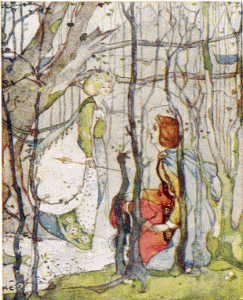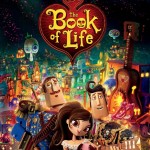[I’ve updated this post from 2011. I thought it would make an appropriate response to Wednesday’s guest post. Enjoy!]
Feri* is……

Feri is a form of traditional witchcraft. It’s an American-born, syncretic tradition, informed by Hoodoo, Voudoun, Huna, Wicca, Yoruba, Gwyddon (Welsh witchcraft), Appalachian folk tradition, and probably more that I just don’t know about. Victor Anderson saw himself drawing on ancient commonalities, the current of the ‘small dark peoples of the earth.’
Feri is non-dual. There is no ultimate God and Goddess polarity, except when there is. I cannot speak about the many ways the Gods are known, as I don’t know them well (and I wouldn’t if I did!), but the core belief is of the Star Goddess as the foundation of all existence, who made love to herself, and brought forth the Twins. Duality exists in unity. Victor said, ‘All gods are Feri gods.’ There is an element of universality in this statement, but this doesn’t mean all gods are the same thing. We are all human, and therefore the same entity, except I am not you. From a species point of view, you and I are not that different and represent much of the same thing to other beings. But we’re not the same. Kinda like the Gods.
Feri is paradoxical.
Feri is ecstatic, sexual, and creative, but isn’t concerned with fertility. Cycles of the seasons of are important, but only in the sense that we connect to where we are; there is no monolithic mythic adherence to seasons and their festivals. The only central holidays that all Feri practice are Samhain, as honor of the Ancestors is an important part of the practice, and Beltaine. Ritual connects us with the spirit world. Energies of god and goddess, goddess and goddess, god and god, and god/dess and god/dess in any combination are embodied and expressed in our lives. Sexuality is a creative expression of life force; creativity is a form of sexual energy springing from life force.
Feri is experiential. Theory is great. In fact, I have found Feri folk to be among some of the brightest, boldest, most impressive and well-educated people I’ve met, particularly in the Pagan world – so a good theory, some new bit of lore or myth to chew on will suit just fine. However, if that lore or theory doesn’t move you, deepen your connection with gods, or engage your practice – if you just don’t practice at all – well then, all that theory is useless.
Feri is mystical and also practical. If you can’t use your craft where and when you need it, what good is it?
Feri is black magic and white magic. ‘White magic is poetry. Black magic is anything that works,’ according to Victor.
Feri is often called amoral. Most people hold different nuances for the words ethical and moral (even though they mean the same things), so I like to think of Feri as highly ethical, but devoid of external morality. It has virtues, but very little is off-limits. Consent and integrity are the foundation of its ethic. ‘Do what thou wilt shall be the whole of the law. Love is the law. Love under will.’ Feri and Aleister Crowley might agree upon this.
Feri is really quite simple, though not simplistic, and quite complex.
Feri is an initiatory tradition. There are teachers who teach via distance or over the internet. There are workshops and group rituals that are based on Feri concepts and tools. These are a great beginning. But the current is only passed in person.There are no levels; there is only one initiation.
Feri is a priesthood; ideally there is no laity. All Feri initiates are shaman priest/esses. There is no hierarchy.
Feri is powerful and awesome.
Feri is where I feel at home.
*Feri, Faerie, Faery. Insert your chosen spelling.















